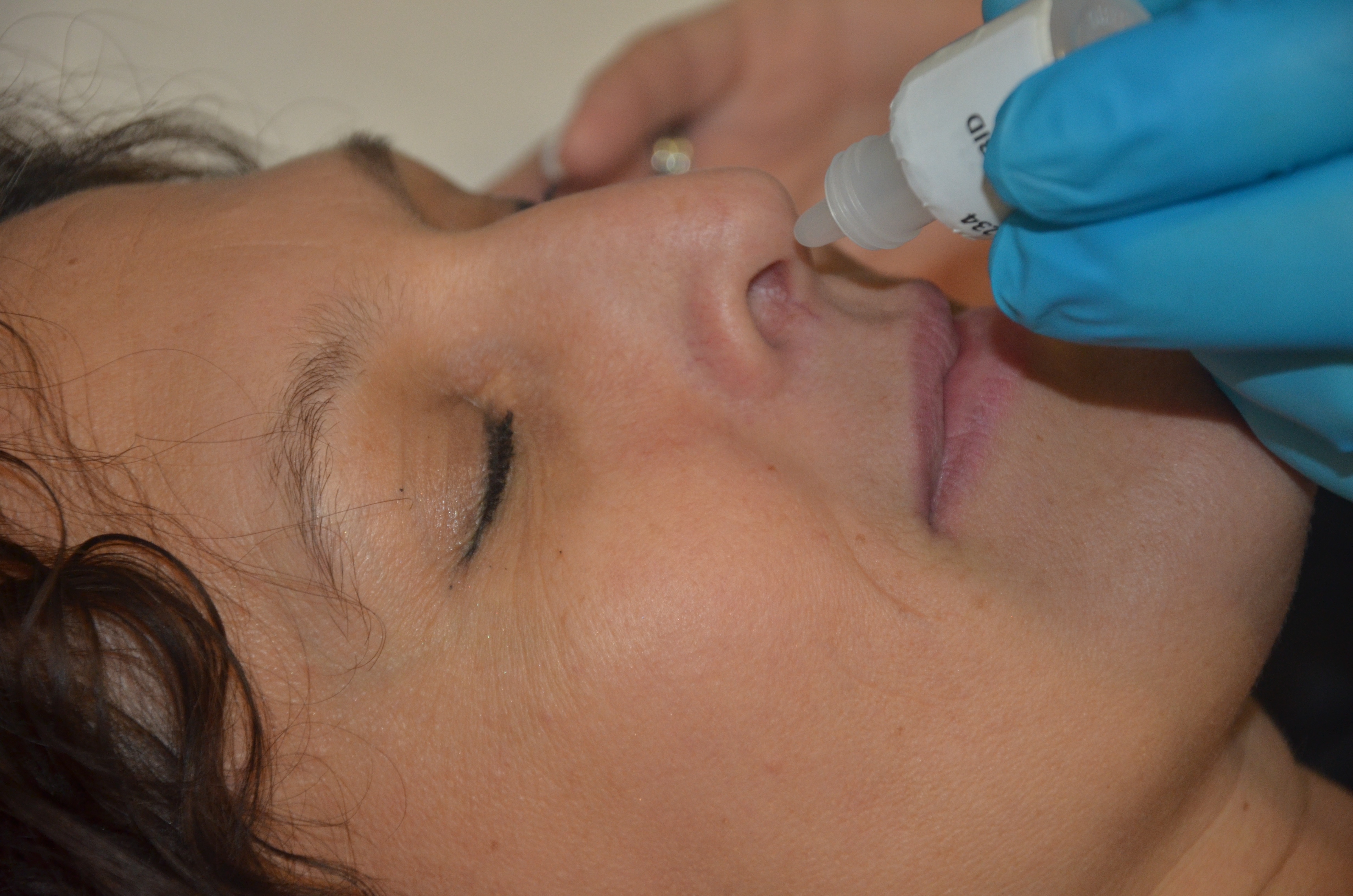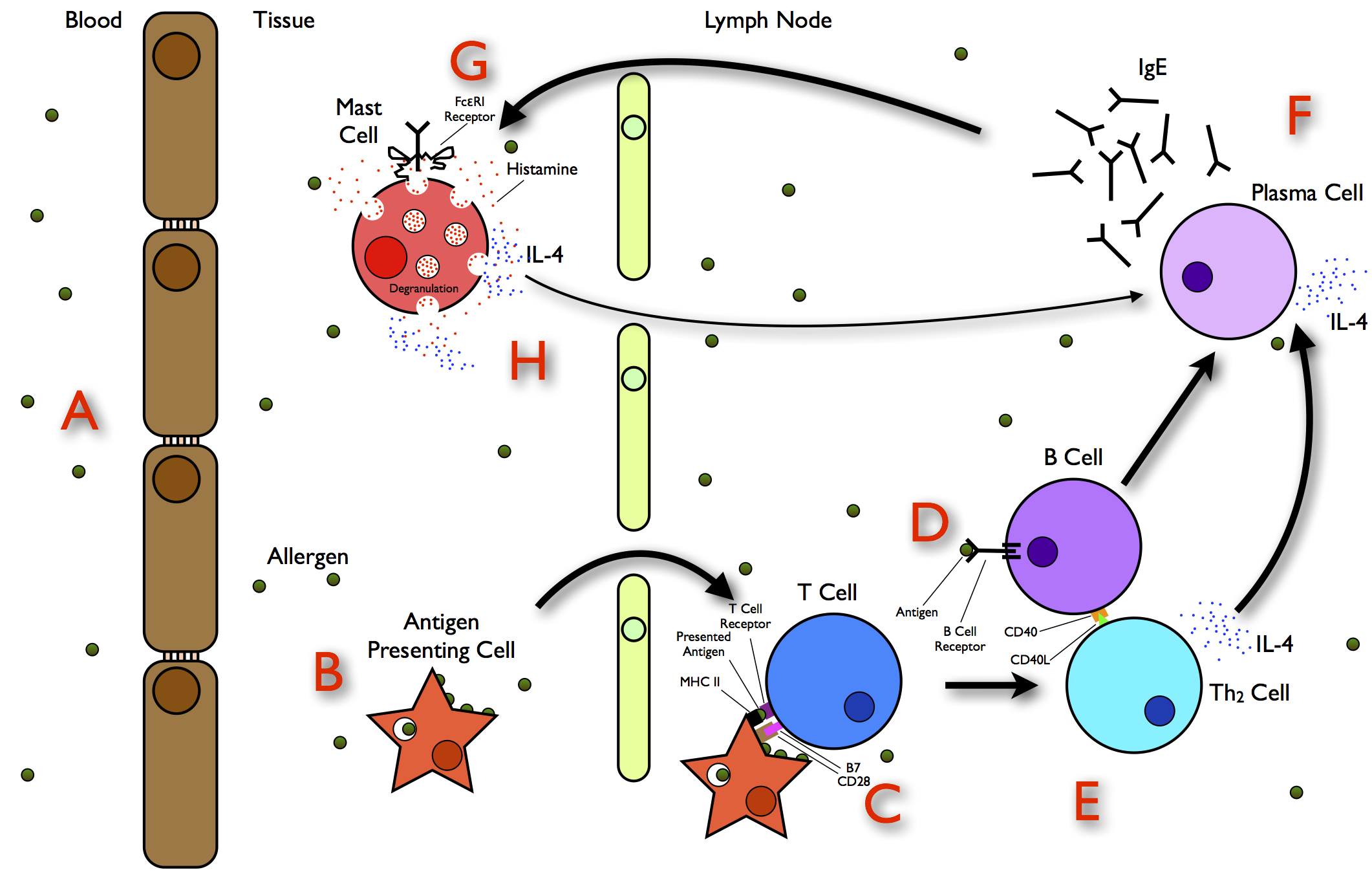|
Flumetasone
Flumetasone, also known as flumethasone, is a corticosteroid for topical use. It has anti- inflammatory, antipruritic, and vasoconstrictive properties, and it is approved for human and animal use for a variety of medical conditions. It was patented in 1951 and approved for medical use in 1964. Chemistry and mechanism of action Flumetasone is classified as a moderately potent corticosteroid and a glucocorticoid receptor agonist. Like other corticosteroids, it functions as an immunosuppressant by decreasing function of the lymphatic system, reducing immunoglobulin and complement concentrations, lowering lymphocyte concentrations, and preventing antigen-antibody binding. Flumethasone is 420 times as potent as cortisone in an animal model for anti-inflammatory activity. Society and culture Names Trade names include Locacorten, Locorten, and Orsalin. It is available in combination with clioquinol, under the brand name Locacorten-Vioform (in some countries Locorten-Vioform), ... [...More Info...] [...Related Items...] OR: [Wikipedia] [Google] [Baidu] |
Flumetasone Pivalate
Flumetasone pivalate is a synthetic glucocorticoid corticosteroid Corticosteroids are a class of steroid hormones that are produced in the adrenal cortex of vertebrates, as well as the synthetic analogues of these hormones. Two main classes of corticosteroids, glucocorticoids and mineralocorticoids, are invo ... and a corticosteroid ester. It is the 21-acetate ester of flumetasone. References Corticosteroid esters Glucocorticoids {{steroid-stub ... [...More Info...] [...Related Items...] OR: [Wikipedia] [Google] [Baidu] |
Topical
A topical medication is a medication that is applied to a particular place on or in the body. Most often topical medication means application to body surfaces such as the skin or mucous membranes to treat ailments via a large range of classes including creams, foams, gels, lotions, and ointments. Many topical medications are epicutaneous, meaning that they are applied directly to the skin. Topical medications may also be inhalational, such as asthma medications, or applied to the surface of tissues other than the skin, such as eye drops applied to the conjunctiva, or ear drops placed in the ear, or medications applied to the surface of a tooth. The word ''topical'' derives from Greek τοπικός ''topikos'', "of a place". Justification Topical drug delivery is a route of administering drugs via the skin to provide topical therapeutic effects. As skin is one of the largest and most superficial organs in the human body, pharmacists utilise it to deliver various dr ... [...More Info...] [...Related Items...] OR: [Wikipedia] [Google] [Baidu] |
Antigen-antibody Interaction
Antigen-antibody interaction, or antigen-antibody reaction, is a specific chemical interaction between antibodies produced by B cells of the white blood cells and antigens during immune reaction. The antigens and antibodies combine by a process called agglutination. It is the fundamental reaction in the body by which the body is protected from complex foreign molecules, such as pathogens and their chemical toxins. In the blood, the antigens are specifically and with high affinity bound by antibodies to form an antigen-antibody complex. The immune complex is then transported to cellular systems where it can be destroyed or deactivated. The first correct description of the antigen-antibody reaction was given by Richard J. Goldberg at the University of Wisconsin in 1952. It came to be known as "Goldberg's theory" (of antigen-antibody reaction). There are several types of antibodies and antigens, and each antibody is capable of binding only to a specific antigen. The specificity of th ... [...More Info...] [...Related Items...] OR: [Wikipedia] [Google] [Baidu] |
Fetlock
Fetlock is the common name in horses, large animals, and sometimes dogs for the metacarpophalangeal and metatarsophalangeal joints (MCPJ and MTPJ). Although it somewhat resembles the human ankle in appearance, the joint is homologous to the ball of the foot. In anatomical terms, the hoof corresponds to the toe, rather than the whole human foot. Etymology and related terminology The word literally means "foot-lock" and refers to the small tuft of hair situated on the rear of the fetlock joint. "Feather" refers to the particularly long, luxuriant hair growth over the lower leg and fetlock that is characteristic of certain breeds. Formation A fetlock (a MCPJ or a MTPJ) is formed by the junction of the third metacarpal (in the forelimb) or metatarsal (in the hindlimb) bones, either of which are commonly called the cannon bones, proximally and the proximal phalanx distally, commonly called the pastern bone. Paired proximal sesamoid bones form the joint with the ... [...More Info...] [...Related Items...] OR: [Wikipedia] [Google] [Baidu] |
Osselet
Osselet is arthritis in the fetlock joint of a horse, caused by trauma. Osselets usually occur in the front legs of the horse, because there is more strain and concussion on the fetlock there than in the hind legs. The arthritis will occur at the joint between the cannon bone and large pastern bone, at the front of the fetlock. Definition Osselets refers to the inflammation of the connective tissue that is around the cannon bone and the fetlock joint. Inflammation can involve arthritis and can become a degenerative joint disease. The condition is a job risk for young thoroughbreds and is usually caused by stress and due to the trauma of repeated hard training in young horses. The first thing that appears on a horse with osselets is a swelling in the front part of the fetlock joint, there may be synovial strains on the sides of the joint. It is painful for the horse to flex the joint and usually causes lameness. Fetlock joint Definition Fetlock is the common name for the metacar ... [...More Info...] [...Related Items...] OR: [Wikipedia] [Google] [Baidu] |
Allergy
Allergies, also known as allergic diseases, are various conditions caused by hypersensitivity of the immune system to typically harmless substances in the environment. These diseases include Allergic rhinitis, hay fever, Food allergy, food allergies, atopic dermatitis, allergic asthma, and anaphylaxis. Symptoms may include allergic conjunctivitis, red eyes, an itchy rash, sneeze, sneezing, coughing, a rhinorrhea, runny nose, shortness of breath, or swelling. Note that food intolerances and food poisoning are separate conditions. Common allergens include pollen and certain foods. Metals and other substances may also cause such problems. Food, insect stings, and medications are common causes of severe reactions. Their development is due to both genetic and environmental factors. The underlying mechanism involves immunoglobulin E antibodies (IgE), part of the body's immune system, binding to an allergen and then to FcεRI, a receptor on mast cells or basophils where it triggers ... [...More Info...] [...Related Items...] OR: [Wikipedia] [Google] [Baidu] |
Rheumatology
Rheumatology () is a branch of medicine devoted to the diagnosis and management of disorders whose common feature is inflammation in the bones, muscles, joints, and internal organs. Rheumatology covers more than 100 different complex diseases, collectively known as rheumatic diseases, which includes many forms of arthritis as well as lupus and Sjögren syndrome, Sjögren's syndrome. Physician, Doctors who have undergone formal training in rheumatology are called rheumatologists. Many of these diseases are now known to be disorders of the immune system, and rheumatology has significant overlap with immunology, the branch of medicine that studies the immune system. Rheumatologist A rheumatologist is a physician who specializes in the field of medical sub-specialty called rheumatology. A rheumatologist holds a board certification after specialized training. In the United States, training in this field requires four years of undergraduate school, four years of medical school, a ... [...More Info...] [...Related Items...] OR: [Wikipedia] [Google] [Baidu] |
Generic Drug
A generic drug is a pharmaceutical drug that contains the same chemical substance as a drug that was originally protected by chemical patents. Generic drugs are allowed for sale after the patents on the original drugs expire. Because the active chemical substance is the same, the medical profile of generics is equivalent in performance compared to their performance at the time when they were patented drugs. A generic drug has the same active pharmaceutical ingredient (API) as the original, but it may differ in some characteristics such as the manufacturing process, formulation, excipients, color, taste, and packaging. Although they may not be associated with a particular company, generic drugs are usually subject to government regulations in the countries in which they are dispensed. They are labeled with the name of the manufacturer and a generic non-proprietary name such as the United States Adopted Name (USAN) or International Nonproprietary Name (INN) of the drug. A generic ... [...More Info...] [...Related Items...] OR: [Wikipedia] [Google] [Baidu] |
Food And Drug Administration
The United States Food and Drug Administration (FDA or US FDA) is a List of United States federal agencies, federal agency of the United States Department of Health and Human Services, Department of Health and Human Services. The FDA is responsible for protecting and promoting public health through the control and supervision of food safety, tobacco products, caffeine products, dietary supplements, Prescription drug, prescription and Over-the-counter drug, over-the-counter pharmaceutical drugs (medications), vaccines, biopharmaceuticals, blood transfusions, medical devices, electromagnetic radiation emitting devices (ERED), cosmetics, Animal feed, animal foods & feed and Veterinary medicine, veterinary products. The FDA's primary focus is enforcement of the Federal Food, Drug, and Cosmetic Act (FD&C). However, the agency also enforces other laws, notably Section 361 of the Public Health Service Act as well as associated regulations. Much of this regulatory-enforcement work is ... [...More Info...] [...Related Items...] OR: [Wikipedia] [Google] [Baidu] |
Prodrug
A prodrug is a pharmacologically inactive medication or compound that, after intake, is metabolized (i.e., converted within the body) into a pharmacologically active drug. Instead of administering a drug directly, a corresponding prodrug can be used to improve how the drug is absorbed, distributed, metabolized, and excreted (ADME). Prodrugs are often designed to improve bioavailability when a drug itself is poorly absorbed from the gastrointestinal tract. A prodrug may be used to improve how selectively the drug interacts with cells or processes that are not its intended target. This reduces adverse or unintended effects of a drug, especially important in treatments like chemotherapy, which can have severe unintended and undesirable side effects. History Many herbal extracts historically used in medicine contain glycosides (sugar derivatives) of the active agent, which are hydrolyzed in the intestines to release the active and more bioavailable aglycone. For example, sal ... [...More Info...] [...Related Items...] OR: [Wikipedia] [Google] [Baidu] |
Ester
In chemistry, an ester is a compound derived from an acid (either organic or inorganic) in which the hydrogen atom (H) of at least one acidic hydroxyl group () of that acid is replaced by an organyl group (R). These compounds contain a distinctive functional group. Analogues derived from oxygen replaced by other chalcogens belong to the ester category as well. According to some authors, organyl derivatives of acidic hydrogen of other acids are esters as well (e.g. amides), but not according to the IUPAC. Glycerides are fatty acid esters of glycerol; they are important in biology, being one of the main classes of lipids and comprising the bulk of animal fats and vegetable oils. Lactones are cyclic carboxylic esters; naturally occurring lactones are mainly 5- and 6-membered ring lactones. Lactones contribute to the aroma of fruits, butter, cheese, vegetables like celery and other foods. Esters can be formed from oxoacids (e.g. esters of acetic acid, carbonic acid ... [...More Info...] [...Related Items...] OR: [Wikipedia] [Google] [Baidu] |
Pivalic Acid
Pivalic acid is a carboxylic acid with a molecular formula of (CH3)3CCO2H. This colourless, odoriferous organic compound is solid at room temperature. Two abbreviations for pivalic acid are ''t''-BuC(O)OH and PivOH. The pivalyl or pivaloyl group is abbreviated ''t''-BuC(O). Pivalic acid is an isomer of valeric acid, the other two isomers of it are 2-methylbutanoic acid and 3-methylbutanoic acid. Preparation Pivalic acid is prepared on a commercial scale by hydrocarboxylation of isobutene via the Koch reaction: :(CH3)2C=CH2 + CO + H2O → (CH3)3CCO2H Such reactions require an acid catalyst such as hydrogen fluoride. ''tert''-Butyl alcohol and isobutyl alcohol can also be used in place of isobutene. Globally, several million kilograms are produced annually. Pivalic acid is also economically recovered as a byproduct from the production of semisynthetic penicillins like ampicillin and amoxycillin. It was originally prepared by the oxidation of pinacolone with chromic acid: : A ... [...More Info...] [...Related Items...] OR: [Wikipedia] [Google] [Baidu] |





